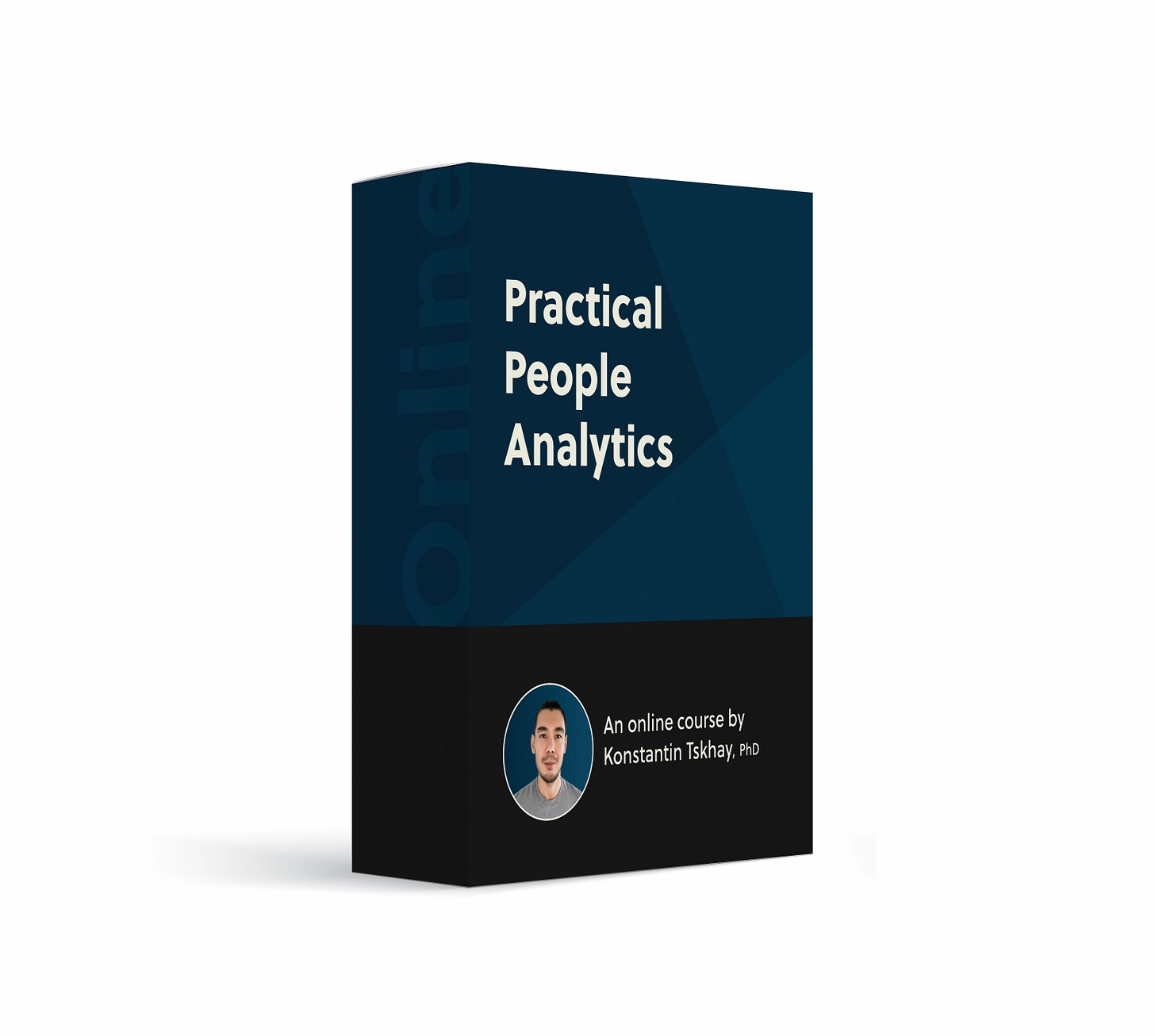Hi, friends,
A few weeks ago, we talked about Data Literacy in HR, and I even created a quick quiz on how people feel about their data literacy.
The average score thus far is 67/100.
Check out how you do here! Btw, it takes about 3.5 minutes to complete.
Okay, now that you are done.
Let’s talk about Data Literacy and what it is specifically.
To me, Data Literacy means 4 things:
Knowing data
Understanding basic analytics
Using more advanced analytics
Data visualization
In pretty much everything you do.
Let’s jump in. Or waltz in since I pulled a muscle doing box jumps the other day. Womp Womp.
1. Know your data.
Yes, yes!
We all think that we know our data well. But really, many organizations don’t know their data. At least not in the way I think about it.
For example, if I ask you, are you ready to move to a new HRIS tomorrow?
You probably will think about all the data inconsistencies and say, no thanks.
When working with data, you have to understand the different varieties of data, including numeric data, currency data, and, of course, nominal data. You need to think through fields and how they are structured. And you need to know how to connect the different databases without manual data entry.
But one of the most common questions I hear in HR is:
How do we collect the data?
From Candidates
Employees
Technology
You get the drill
Data Literacy ultimately starts with a strong understanding of how to collect and organize your data neatly and effectively.
And sure, it will never be 100%.
But the closer it gets to 100%, the easier it will be to run analytics. Hence, knowing your data is #1 in Data Literacy.
2. Understanding Basic Analytics
The second piece is around understanding the basic analytics. And sure, we can say HR metrics here and even bring the ISO standard if we want.
But the basics go beyond that.
They focus on a singular question:
Analytics for what
Yes, we can collect and connect a ton of data. But without any purpose, these data will sit in a shed. Sad. Forgotten. Never used.
The basis of analytics is reason and need.
And that is because analytics is not a descriptive discipline.
It is the discipline of pure function.
So, what does this mean for Data Literacy?
Well, it means your basics are set up to help you understand things about your organization. Sure, they are not fancy analyses, and if we are sincere, they are simple HR metrics moving over time. But every one of them is functional.
3. Using Mode Advanced Analytics
As before, the reason comes into question here. Why would you ever use advanced analytics?
Well, usually, it is to establish the relationships between different variables to understand your process at a deeper level and, perhaps, attempt to predict the future.
This is where you start implementing analytics into various HR programs to help you iterate and do better.
You start using things like:
Regression
Clustering
NLP
Organizational Network Analysis
To name a few.
They are used to really connect the data and correlate it across data sources.
4. Data Visualization
Finally, this stage of Data Literacy focuses on how well you can convey the information to others.
No, it is not about how pretty your graph or dashboard is.
It is about how quickly I can read and extract value from it.
That is all.
Want to take a quick assessment? Check out how you do here!
See you next week!
K
Whenever you’re ready, there are 2 ways I can help you:
If you’re still looking to get started in People Analytics, I recommend starting with my affordable course:
Practical People Analytics Certificate: Build data-driven HR programs to 10x your professional effectiveness, business impact, and career. This comprehensive course will teach you everything from building an HR dashboard for business results to driving growth through advanced analytics. Join your peers today!
If you want support in your Human Capital programs like Engagement, Retention, and Comp & Ben and want to take a more data-driven approach, contact me for some consulting services at Tskhay & Associates.
Share





